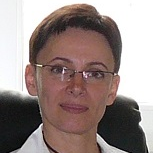Atomic Spectroscopy: Theories, Methods and Applications
A special issue of Applied Sciences (ISSN 2076-3417). This special issue belongs to the section "Applied Physics General".
Deadline for manuscript submissions: closed (31 January 2022) | Viewed by 24763

Special Issue Editors
Interests: analytical applications of atomic spectrometry; physical–chemical research of historic objects; laser microsampling in solid state research
Interests: use of spectroscopic methods for biomedical samples analysis; X-ray fluoresce spectroscopy and imaging; vibrational spectroscopy; chemometrics
Special Issue Information
Dear Colleagues,
Spectroscopic methods which are currently available are based on diverse measurement techniques, allowing to obtain both qualitative and quantitative information about elemental and molecular composition of samples. The vibrational spectra obtained using IR or Raman spectroscopy allow for collecting information on functional groups characteristic for analyzed compounds; the effects of interaction of electromagnetic radiation within the range of visible light allow measuring organic and inorganic components of variable samples, while elemental and isotopic composition might be determined based on evaluation of mass and atomic spectra.
We have not even realized at which point, instead of identification of detailed bulk chemical information, we started to image two and/or three dimensional data of organic and inorganic composition with spatial resolution reaching nanometers. New theoretical conceptions, latest technical, and computational approaches as well as increasing computing power accompany our work at every step, making it even more fascinating than before.
In this Special Issue, we invite submissions exploring developments of atomic and molecular spectroscopic methods, analysis and interpretation of spectral data as well as examples of novel applications in bioanalytical, biomedical, environmental, forensic, and atmospheric sciences, as well as conservation science and archaeometry. Contributions stating both research papers and reviews are welcomed.
Prof. Dr. Barbara Wagner
Prof. Dr. Joanna Chwiej
Guest editors
Manuscript Submission Information
Manuscripts should be submitted online at www.mdpi.com by registering and logging in to this website. Once you are registered, click here to go to the submission form. Manuscripts can be submitted until the deadline. All submissions that pass pre-check are peer-reviewed. Accepted papers will be published continuously in the journal (as soon as accepted) and will be listed together on the special issue website. Research articles, review articles as well as short communications are invited. For planned papers, a title and short abstract (about 100 words) can be sent to the Editorial Office for announcement on this website.
Submitted manuscripts should not have been published previously, nor be under consideration for publication elsewhere (except conference proceedings papers). All manuscripts are thoroughly refereed through a single-blind peer-review process. A guide for authors and other relevant information for submission of manuscripts is available on the Instructions for Authors page. Applied Sciences is an international peer-reviewed open access semimonthly journal published by MDPI.
Please visit the Instructions for Authors page before submitting a manuscript. The Article Processing Charge (APC) for publication in this open access journal is 2400 CHF (Swiss Francs). Submitted papers should be well formatted and use good English. Authors may use MDPI's English editing service prior to publication or during author revisions.
Keywords
- atomic and molecular spectroscopy
- theoretical and technical development
- new approaches to data analysis and interpretation
- spectroscopic imaging
- applications
Benefits of Publishing in a Special Issue
- Ease of navigation: Grouping papers by topic helps scholars navigate broad scope journals more efficiently.
- Greater discoverability: Special Issues support the reach and impact of scientific research. Articles in Special Issues are more discoverable and cited more frequently.
- Expansion of research network: Special Issues facilitate connections among authors, fostering scientific collaborations.
- External promotion: Articles in Special Issues are often promoted through the journal's social media, increasing their visibility.
- e-Book format: Special Issues with more than 10 articles can be published as dedicated e-books, ensuring wide and rapid dissemination.
Further information on MDPI's Special Issue polices can be found here.






